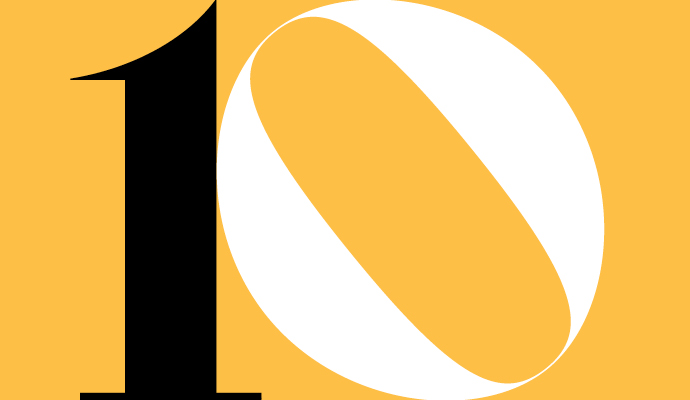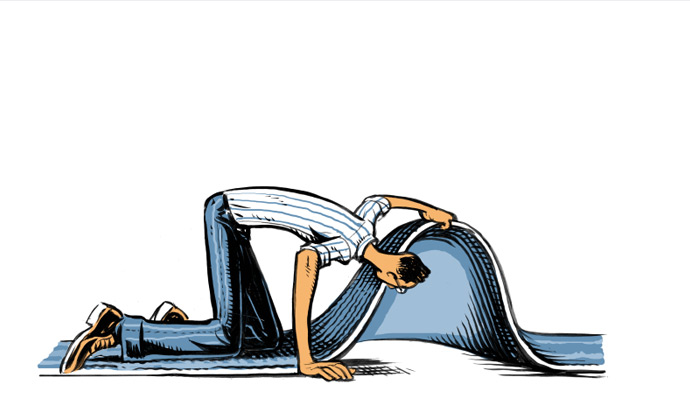What’s the Secret to Leadership Presence?
Be present. Although your mannerisms and dress matter, so does your focus on the person or task at hand.
Leadership presence—the skills and characteristics of a leader that can improve performance, both in the person and in the organization he or she oversees—is about to have a moment. Perhaps it’s just that the executive-in-the-hoodie fad has passed its sell-by date of coolness, even on the ragged edges of Silicon Valley. Or maybe the increasing diversity that characterizes companies today is setting off a search for alternatives to the square-jawed, deep-voiced, airline-pilot persona that once epitomized our common conception of a leader.
Whatever the reasons, Sylvia Ann Hewlett’s new book, Executive Presence: The Missing Link between Merit and Success, is likely to deepen the interest. This is in part because Hewlett has given the concept a catchy abbreviation, EP, which echoes Daniel Goleman’s wildly successful introduction of EI (or emotional intelligence), and introduced it into the lexicon of leadership. But it’s also because Hewlett has for decades displayed an unerring ability to place herself ahead of the curve when it comes to identifying and researching the next big thing in the workplace.
In Hewlett’s view, true EP is an ineffable blend of appearance, communication skills, and gravitas—a wonderful word that definitively declares the end of the hoodie era. Hewlett’s explanation of how these qualities work together is compelling; I admire both her approach and the meticulous research that informs it. But based on my 25 years of experience working with leaders, I’d suggest that true leadership presence is rooted less in a combination of skills and characteristics than in the capacity to actually be present. That means being present for the moment, for others, for the mission, and for the task at hand. There’s a reason why the words “presence” and “present” have the same root.
People who give us their undivided attention most vividly manifest presence. I first saw this demonstrated decades ago when I was a speechwriter for senior executives. Accompanying them to high-profile events, I noted I could always tell the most senior person in the room because he (it was always he) appeared the least distracted, the most able to focus on what was happening. He wasn’t rooting around in a briefcase for a piece of paper or desperately trying to stash a dripping umbrella. He wasn’t checking to see if his slides were in order or wondering if he’d have time to get to his next appointment. Other people were preoccupied with these details on his behalf, freeing him to actually listen and respond to those around him.
This capacity to be present, to be unencumbered by logistical details or other distractions, gave the leaders I watched an appearance of freedom, authority, and ease. These are not qualities that can be coaxed forth by addressing the cosmetics of leadership presence: what we wear, how we walk, the relative firmness of our handshake, the timbre of our voice. All these things matter, but they alone cannot make someone who is unfocused seem like a leader. Conversely, individuals who at first glance appear unprepossessing can exude calm and authority if they are fully present.
I’ve been thinking about this over the last year because the capacity to offer our undivided attention has become at once more important and more difficult to sustain. It’s more important because we work in an increasingly multicultural environment, and full presence can be read across cultures: It doesn’t require a decoder or a course on cross-cultural differences. When talking to someone with roots halfway across the world, we might be unsure what a specific gesture or inflection means, but we know in our gut if she is paying attention, if her mind and heart are available and engaged. Presence transcends gestures and words, which is why even animals can read it (as fans of Cesar Millan, the dog whisperer, can attest).
But even as it has become more important, being present has become more difficult, thanks to the ubiquity and power of the always-on technologies we use , both to do our work and to manage our personal lives. Having these technologies at our fingertips continually tempts us to do two things at once. This may make us feel efficient, yet it’s undeniable that doing two different things at the same time makes it impossible to be fully present for either.
Even as it becomes more important, being present has become more difficult, thanks to technology.
The irony is that our quest for efficiency, our desire to leave no task undone, has the ultimate effect of undermining our capacity to be fully engaged by what we do. So even as we work harder and improve our performance, we are eroding our capacity to inspire the trust and confidence required for sustainable success.
What to do?
For one thing, we need to be more intentional about setting policies around how we use our time and attention, becoming in effect our own HR departments. By honoring boundaries around how and when we respond, we diminish stress, improve our capacity to be thoughtful, and create the conditions needed to manifest an engaged presence. This is not easy, and it might require some selling upward—otherwise known as convincing the boss—but regaining control of how we communicate is an essential first step.
Second, we need to push back against habitual multitasking, which can be useful but exacts a high cost, not only in lost gravitas, to use Hewlett’s word, but in terms of avoiding mistakes. While it’s probably impossible to avoid multitasking altogether, it often becomes compulsive, even addictive. And if we become uncomfortable having a moment to just let our mind wander, we know things have probably gone too far.
Finally, we need to recognize that presence requires practice and training. The Vietnamese monk Thich Nhat Han, a lifelong meditator, notes that our capacity for presence can be developed by simple techniques such as using the ring of our phone as an awareness cue. Rather than responding by grabbing the phone, we can use the ring as a reminder to take one deep, long slow easy breath, focus our minds, and then pick up the phone. I’ve tried this simple discipline and found it highly effective. What’s most powerful is the way this positions you to answer the phone: fully present for whoever is calling.





